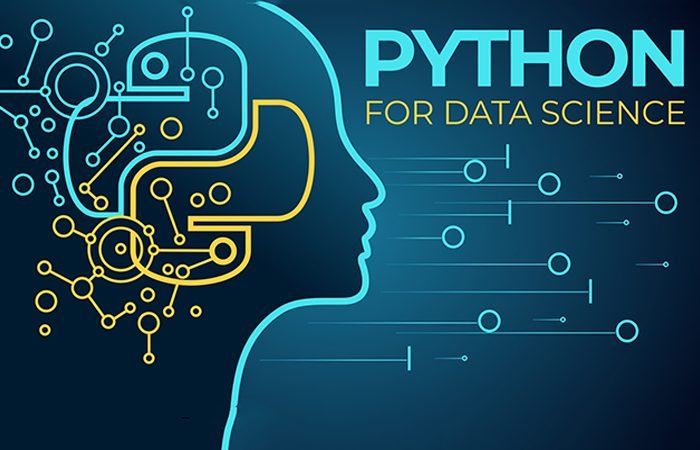To learn Python means to practice Python. Python is a popular high-level, interpreted, interactive, and object-oriented programming language invented by Guido van Rossum in 1991. Its popularity rests on its simplicity, readability, and ease of use, making it a popular option for novices and professionals.

It may be processed in a procedural, object-oriented, or functional style and operates on an interpreter system. It features a clean and focused syntax centred on readability and a vast and active community offering assistance, tools, and libraries to help developers solve issues and build new things.
Getting started with Python
Here are some key points to consider:
Choose an Integrated Development Environment (IDE) or code editor to develop and execute Python code. Some prominent choices are:
- PyCharm
- Visual Studio Code
- Sublime Text
- Atom
- IDLE
Install Python on your PC. You may grab the latest version of Python from the official website: https://www.python.org/downloads/
Learn the basic principles of Python programming language, including:
- Variables and data types
- Operators
- Control structures (if/else statements, loops)
- Functions
- Modules and packages
Practice developing Python code by tackling exercises and challenges. Some resources for Python exercises are: https://pynative.com/python-exercises-with-solutions/
https://www.w3resource.com/python-exercises/python-basic-exercises.php
Join online groups and forums to network with other Python developers and seek support when required. Some popular communities are:
- Reddit’s r/learnpython
- Python Discord server
- Stack Overflow
Read Python documentation and tutorials to learn more about the language and its capabilities. Some resources for Python tutorials are:
https://docs.python.org/3/tutorial/index.html
https://realpython.com/
Data types in Python
Python includes various built-in data types used to represent different sorts of data. Here are the most popular data types in Python
Numeric types: int, complex, float
String type: str
Sequence types: list, range, tuple
Set types: frozenset, set
Mapping type: dict
Boolean type: bool
None type: None
Binary types: memoryview, bytes, bytearray
Here are a few examples in detail:
Integers: Whole numbers, such as 1, 2, 3, and so on.
Floating-point numbers: They are decimals, such as 7.21, 5.168, etc.
Tuples: Tuples are ordered, immutable collections of elements, such as (1, 2, 3), (“apple”, “banana”, “cherry”), and others.
Strings: They are sequences of characters, such as “hello”, “world”, etc.
Dictionaries: Dictionaries are unordered collections of key-value pairs, such as {“name”: “John”, “age”: 30}, {“fruit”: “apple”, “colour”: “red”}, etc.
Lists: They are ordered collections of elements, such as [“apple”, “banana”, “cherry”], and others.
Here’s an example of how to create variables of different data types in Python:
a = 42
b = 3.14
c = 2 + 3j
str_var = “Hello, world!”
lst_var = [1, 2, 3]
tpl_var = (4, 5, 6)
rng_var = range(10)
dct_var = {“name”: “Alice”, “age”: 30}
st_var = {1, 2, 3}
fst_var = frozenset({4, 5, 6})
bool_var = True
bts_var = b”hello”
ba_var = bytearray(bts_var)
mv_var = memoryview(ba_var)
none_var = None
Functions in Python
Blocks of code called functions may be reused to carry out different tasks. Using the def keyword in Python, you may create your functions. Here is an example of a function that computes a number’s factorial:
def factorial(t):
if t == 0:
return 1
else:
return t * factorial(t – 1)
The following is how your Python code should call this function:
def factorial(n):
result = 1
for i in range(1, n + 1):
result *= i
return result
num = 5
print(factorial(num)) # Output: 120
Control structures in Python
Python has several control structures that let you manage the application’s flow. These consist of try-except blocks, for loops, while loops, and if-else expressions. An overview of various control structures is provided below:
If-else clauses: If-else clauses let you run several chunks of code in response to a condition. For instance:
if y > 0:
print(“y is positive”)
else:
print(“y is non-positive”)
For loops: For loops allow you to iterate over a sequence of elements. For example:
for k in range(20):
print(k)
While loops: While loops let you continually run a section of code as long as a condition is met. For instance:
x = 0
while x < 10:
print(x)
x += 1
Try-except blocks: Try-except blocks allow you to manage potential exceptions in your code. For instance:
try:
num = int(input(“Enter a number: “))
result = 1 / num
except ValueError:
print(“Invalid input”)
except for ZeroDivisionError:
print(“Cannot divide by zero”)
else:
print(“Result:”, result)
This guide covers Python fundamentals such as data types, control structures, functions, and modules. The best way to learn Python is to start with the basics and then slowly master it by practising coding or taking part in a workshop.
Conclusion
Imarticus Learning offers a Postgraduate Programme in Data Science and Analytics (PGA). This programme uses data science and creates analytical models that enhance corporate performance. Machine learning and Python programming are among the basic and advanced data science and analytics techniques covered in the curriculum. The course is one of the best to learn Python for beginners. It offers certification programmes and job assurance.


